
Overview
The Real Estate and Rental and Leasing industry encompasses a wide range of activities related to the acquisition, management, and use of property. This industry involves buying, selling, renting, and leasing various types of real estate properties, such as residential, commercial, industrial, and agricultural properties. It plays a crucial role in facilitating the use of land and buildings for individuals, businesses, and organizations.
Depending on specific features and functions, GAO Tek’s anemometers are sometimes referred to as wind speed gauge, wind velocity meter, wind reader, wind flow detector, wind pace instrument, wind motion sensor, breeze speed recorder, wind rate indicator, air movement meter, wind vane anemometer, zephyrometer, gusty gauge , windy wizard, wind whisperer, aerochronometer.
GAO Tek’s anemometers have the following applications in real estate and rental and leasing industry:
- HVAC System Design and Optimization: In commercial buildings, anemometers can help assess the airflow patterns and ventilation effectiveness. Proper ventilation is crucial for maintaining indoor air quality and occupant comfort. Anemometers can be used to measure air movement and identify areas with insufficient airflow or temperature imbalances, which can then be addressed through HVAC system adjustments or renovations.
- Building Energy Efficiency: Anemometers can play a role in evaluating a building’s energy efficiency. By measuring wind speeds around a property, professionals can identify potential areas of heat loss or gain due to inadequate insulation or poor sealing. This information can guide energy-saving renovations and upgrades.
- Wind Load Assessment: In areas prone to strong winds or storms, anemometers can assist in assessing the potential impact of wind loads on buildings. This is particularly important in the design and construction of new buildings or in evaluating the safety of existing structures. Proper wind load assessment helps ensure structures can withstand adverse weather conditions.
- Roof Inspections: Anemometers can be used during roof inspections to measure wind speeds at different heights. This data can help determine if a roof is properly secured and capable of withstanding wind pressures without damage.
- Outdoor Amenity Planning: In real estate development, especially in areas with outdoor amenities like balconies, terraces, or rooftop gardens, anemometers can aid in assessing wind conditions. This information can influence the design and layout of such spaces to ensure they are comfortable and safe for occupants.
- High-Rise Building Safety: For tall buildings, anemometers can assist in evaluating wind patterns at different heights. This information is important for ensuring pedestrian safety around the building, as well as for determining whether any wind-related restrictions need to be imposed on rooftop activities or features.
- Landscaping and Outdoor Design: Anemometers can be used to measure wind speeds in outdoor spaces, which is relevant for landscaping and outdoor seating design. This information helps create pleasant and functional outdoor environments that are shielded from excessive wind.
- Construction Site Safety: During construction and renovation projects, anemometers can provide real-time data about wind conditions. This information is critical for ensuring the safety of workers and construction equipment, especially when working at heights or with large building components.
More information on anemometers and their applications in other industries can be found on this page
This category page lists related products
Environmental Test Instruments
GAO Tek’s targeted markets are North America, particularly the U.S., Canada, Mexico, and Europe. Hence, in addition to English, this website gaotek.com is offered in other major languages of North America and Europe such as Spanish, French, German, Italian, Polish, Ukrainian, Romanian, Russian, Dutch, Turkish, Greek, Hungarian, Swedish, Czech, Portuguese, Serbian, Bulgarian, Croatian, Danish, Finnish, Norwegian, Slovak, Catalan, Lithuanian, Bosnian, Galician, Slovene, Latvian, Estonian, Welsh, Icelandic, and Irish.
Complying with Real Estate, Rental and Leasing Industry Standards
GAO Tek’s anemometers comply or help our customers comply with the Real Estate and Rental and Leasing Industry standards such as
- ISO 9060:1990
- ASTM E337
- ASHRAE Standard 55
- IEC 60947-2
- ISO 17713-1
Complying with Government Regulations
GAO Tek’s anemometers comply or help our customers comply with the U.S. government regulations such as
- Building Codes
- Energy Codes
- Occupational Safety and Health Administration (OSHA)
- Environmental Protection Agency (EPA)
- Federal Aviation Administration (FAA)
- Federal and State Environmental Regulations
- Local Zoning Regulations
- Instrument Calibration and Accuracy
GAO Tek’s anemometers comply or help our customers comply with the Canadian government regulations such as
- National Building Code of Canada (NBCC)
- National Energy Code for Buildings (NECB)
- Occupational Health and Safety Regulations
- Transport Canada
- Environmental Regulations
- Municipal Bylaws and Zoning Regulations
- Instrument Calibration and Accuracy Standards
GAO Tek’s anemometers comply or help our customers comply with the Mexican government regulations such as
- Mexican Building Codes
- Energy Efficiency Regulations
- Occupational Health and Safety Regulations
- Environmental Regulations
- Municipal Regulations
- Instrument Calibration and Accuracy Standards
GAO Tek’s anemometers comply or help our customers comply with the European government regulations such as
- European Building Codes
- Energy Performance of Buildings Directive (EPBD)
- Occupational Health and Safety Regulations
- Environmental Regulations
- European Standardization Organizations (CEN, CENELEC, ETSI)
- Municipal and Local Regulations
- Instrument Calibration and Accuracy Standards
Case Studies of Anemometers in Real Estate, Rental and Leasing Industry
Anemometers are sometimes called as wind speed gauge, wind velocity meter, wind reader, wind flow detector, wind pace instrument, wind motion sensor, breeze speed recorder, wind rate indicator, air movement meter, wind vane anemometer, zephyrometer, gusty gauge, windy wizard, wind whisperer, aerochronometer.
Here are some practical examples of using anemometers in real estate and rental and leasing industry:
An apartment building developer in New York City installs anemometers on the rooftop to assess wind conditions at different heights. This data is used to design outdoor amenities like rooftop gardens and terraces to ensure they are comfortable and safe for residents.
A real estate company in Boston is renovating a historic building. Anemometers are placed to assess wind patterns around the building. This data helps architects and engineers design window placements and insulation to maintain historical aesthetics while improving energy efficiency.
A property management company in Philadelphia installs anemometers to assess air circulation in a commercial office building. The data is used to optimize the HVAC system for better ventilation and indoor air quality, leading to improved tenant satisfaction.
A property owner in Washington, D.C., wants to retrofit a building for energy efficiency. Anemometers are used to measure airflow and wind patterns around the property. This information guides the installation of energy-efficient windows and insulation materials to reduce heat loss and energy consumption.
A real estate developer in Jersey City plans to add rooftop amenities to a residential building. Anemometers are utilized to assess wind speeds to ensure the safety of residents using the rooftop spaces during different weather conditions.
A manufacturing company leasing an industrial property in Connecticut wants to assess potential wind loads on its equipment and structures. Anemometers are deployed to measure wind speeds and directions, helping engineers ensure that the equipment and structures can withstand local wind conditions.
A retail property owner in Boston wants to understand how wind patterns around their storefronts might affect pedestrian traffic and customer experience. Anemometers are installed to collect data for optimizing store layouts and entry designs.
A property management firm in New York is seeking LEED certification for an office building. Anemometers are used to measure airflow and assess natural ventilation opportunities, contributing to the building’s sustainability goals.
A logistics company in Chicago is expanding its warehouse facilities. Anemometers are installed to measure wind speeds and directions to ensure that the expanded structures can withstand local wind loads and maintain safety standards.
A real estate developer in Detroit is planning an industrial park. Anemometers are utilized to assess wind conditions to determine optimal building placements that adhere to local zoning regulations and safety considerations.
A property management company in Minneapolis is constructing an eco-friendly office building. Anemometers are used to analyze wind patterns around the building site, helping architects design features that harness natural ventilation for improved energy efficiency.
A solar energy company in Indianapolis is working on installing solar panels on the rooftops of commercial buildings. Anemometers are deployed to measure wind speeds to ensure the panels are safely secured and that wind-induced vibrations won’t affect their performance.
A real estate firm in St. Louis is developing a high-rise apartment complex. Anemometers are used to assess wind conditions at different heights to ensure that balconies and outdoor spaces provide a comfortable experience for residents.
An agricultural equipment manufacturer in Kansas is leasing a production facility. Anemometers are employed to study wind patterns and assist in designing efficient cooling solutions for the equipment and production processes.
A data centre operator in Cincinnati is seeking to optimize its ventilation system for cooling efficiency. Anemometers are used to assess airflow patterns and help design a ventilation strategy that minimizes energy consumption while maintaining equipment temperatures.
A city planner in Milwaukee is designing a new urban development project. Anemometers are installed to study wind flow patterns, helping shape the layout and orientation of buildings to ensure comfortable pedestrian spaces.
A real estate developer in Toronto is planning a high-rise residential tower. Anemometers are placed at different heights to assess wind conditions and ensure the safety and comfort of residents on balconies and outdoor spaces.
A property management company in Vancouver aims to improve the energy efficiency of an office building. Anemometers are used to analyze wind patterns to determine optimal window placements and insulation strategies.
A developer in Montreal is constructing a sustainable commercial building seeking LEED certification. Anemometers are utilized to assess wind flow for natural ventilation design, contributing to the building’s energy efficiency goals.
An industrial leasing company in Calgary is evaluating wind loads on equipment at an industrial property. Anemometers are used to measure wind speeds to ensure the safety of structures and equipment.
A property management firm in Edmonton wants to create comfortable outdoor spaces for a residential complex. Anemometers are deployed to analyze wind patterns and guide the placement of amenities such as seating areas and recreational facilities.
A data centre operator in Ottawa is optimizing its cooling system. Anemometers are used to assess airflow and wind patterns to develop a cooling strategy that maintains equipment temperatures efficiently.
A real estate developer in Quebec City is renovating a historic building. Anemometers are employed to assess wind conditions around the property, guiding decisions on window placements and insulation materials.
A property developer in Winnipeg is planning a mixed-use development. Anemometers are installed to study wind flow patterns to ensure the design complies with local zoning regulations and provides comfortable spaces for occupants.
A resort developer in Cancun is planning a new coastal resort. Anemometers are installed to measure wind speeds to ensure that structures are designed to withstand wind loads and provide a safe environment for guests.
A real estate company in Mexico City is developing a high-rise office building. Anemometers are used to assess wind conditions at different elevations to ensure the comfort of occupants in outdoor spaces and on balconies.
An industrial leasing company in Monterrey wants to assess the potential impact of wind on outdoor equipment. Anemometers are deployed to measure wind patterns and guide the arrangement of equipment for safety.
A developer in Guadalajara is constructing an environmentally friendly commercial building. Anemometers are utilized to assess wind patterns to optimize natural ventilation design and enhance the building’s energy efficiency.
A property management firm in Puebla wants to design outdoor amenities for a residential complex. Anemometers are used to analyze wind conditions to optimize the placement of amenities like outdoor seating and recreational spaces.
A real estate developer in Oaxaca is renovating a historic building. Anemometers are employed to assess wind conditions around the property to guide the renovation of windows and insulation while preserving historical character.
A property owner in Tijuana is retrofitting a commercial building for energy efficiency. Anemometers are deployed to assess wind patterns for optimizing window placements and insulation.
A city planner in Querétaro is designing a new urban development project. Anemometers are used to study wind flow patterns to ensure pedestrian comfort and safety in public spaces.
A real estate developer in London is constructing a residential complex. Anemometers are installed to measure wind speeds and guide the design of structures that can withstand wind loads while ensuring residents’ safety.
A developer in Berlin is building a sustainable office building aiming for BREEAM certification. Anemometers are used to assess wind patterns for optimizing natural ventilation strategies, contributing to the building’s sustainability goals.
A property management firm in Paris is planning a high-rise apartment building. Anemometers are employed to study wind conditions at different heights to ensure that outdoor spaces are comfortable and safe for residents.
An industrial property owner in Rotterdam wants to assess wind impact on outdoor storage structures. Anemometers are used to measure wind speeds to guide equipment placement for safety and efficiency.
A property owner in Stockholm is retrofitting a commercial building for energy efficiency. Anemometers are utilized to assess wind patterns to optimize the placement of energy-efficient windows and insulation materials.
A real estate developer in Barcelona is designing outdoor amenities for a residential complex. Anemometers are used to study wind conditions to optimize the layout of outdoor seating areas and recreational spaces.
A property management company in Rome is renovating a historic building. Anemometers are deployed to assess wind patterns to guide decisions on window replacements while preserving historical authenticity.
A city planner in Vienna is developing an urban project. Anemometers are employed to analyze wind flow patterns, influencing the design of pedestrian areas and open spaces for comfort and safety.
GAO RFID Inc. RFID Hardware | RFID Systems, a sister company of GAO Tek Inc., is ranked as a top 10 RFID supplier in the world. Its RFID, BLE, and IoT products have also been widely used in real estate and rental and leasing industry.
Property Equipment Management Industry RFID Solutions
Use of Anemometer with Leading Software and Cloud Services in Real Estate, Rental and Leasing Industry
GAO Tek has used or has facilitated its customers to use GAO’s anemometer with some of the leading software and cloud services in their applications. Examples of such leading software and cloud services include:
- Building Information Modelling (BIM) Software
- Energy Modelling Software
- Property Management Software
- Environmental Monitoring Software
- Weather Data Integration Platforms
- Simulation Software
- HVAC System Design Software
- Urban Planning Software
- Energy Analysis Software
- Environmental Analysis Software
- Weather Data Integration Tools
- Geographical Information Systems (GIS)
- Building Performance Analysis
- Cloud Storage and Hosting
- IoT Platforms
- Environmental Data Platforms
- Weather Underground API
- Data Analytics Platforms
- Google Cloud Dataflow
- Microsoft Azure Stream Analytics
- Building Management Platforms
- GIS and Mapping Platforms
- Custom Cloud Solutions
- Machine Learning and AI Services
GAO Tek’s anemometer and their applications in other industries are listed on this page.
Other related products can be found at this category
Environmental Test Instruments
Meeting Customers’ Demands
Large Choice of Products
In order to satisfy the diversified needs of their corporate customers, GAO Tek Inc. and its sister company GAO RFID Inc. together offer a wide choice of testing and measurement devices, network products, RFID, BLE, IoT, and drones.
Fast Delivery
To shorten the delivery to our customers, GAO has maintained a large stock of its products and is able to ship overnight within the continental U.S. and Canada, and fast delivery to Mexico and Europe from the nearest warehouse.
Local to Our Customers
We are located in both the U.S. and Canada. We travel to customers’ premises if necessary. Hence, we provide a very strong local support to our customers in North America, particularly the U.S., Canada and Mexico and Europe. Furthermore, we have built partnerships with some integrators, consulting firms and other service providers in different cities to further strengthen our services. Here are some of the service providers in real estate and rental and leasing industry we have worked with to serve our joint customers:
- JLL (Jones Lang LaSalle)
- CBRE (CB Richard Ellis)
- Yardi Systems
- MRI Software
- RealPage
- AppFolio
- Buildium
- Entrata
- Sage
- Deloitte
- Blackberry
- IBM Canada
- Accenture Canada
- VTS
- Aptean
- Alteryx
- Trulia (Zillow Group)
- Softtek
- Capgemini
GAO has Many Customers in Real Estate, Rental and Leasing Industry
The products from both GAO Tek Inc. and GAO RFID Inc. have been widely used in real estate and rental and leasing industry by many customers, including some leading companies. Here is more information on applications of GAO RFID Inc.’s products in real estate and rental and leasing industry.
Property Equipment Management Industry RFID Solutions
Here are some of GAO’s customers in real estate and rental and leasing industry:
- The Related Companies
- AvalonBay Communities
- Boston Properties
- Simon Property Group
- Equity Residential
- Vornado Realty Trust
- Aramark
- Forest City Realty Trust
- Mack-Cali Realty Corporation
- Bozzuto Group
- Hines
- Ryan Companies
- CIBC Mellon
- Minto Group
- Canadian Apartment Properties REIT (CAPREIT)
- Ivanhoé
- Dream Unlimited
- Boardwalk REIT


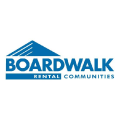
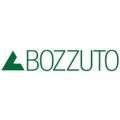




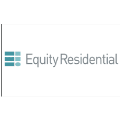





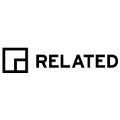


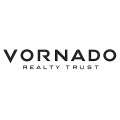
Contact Us
If you are interested in our products, services or partnering with us, please feel free to contact us by filling out this form:
or email us at sales@gaotek.com
